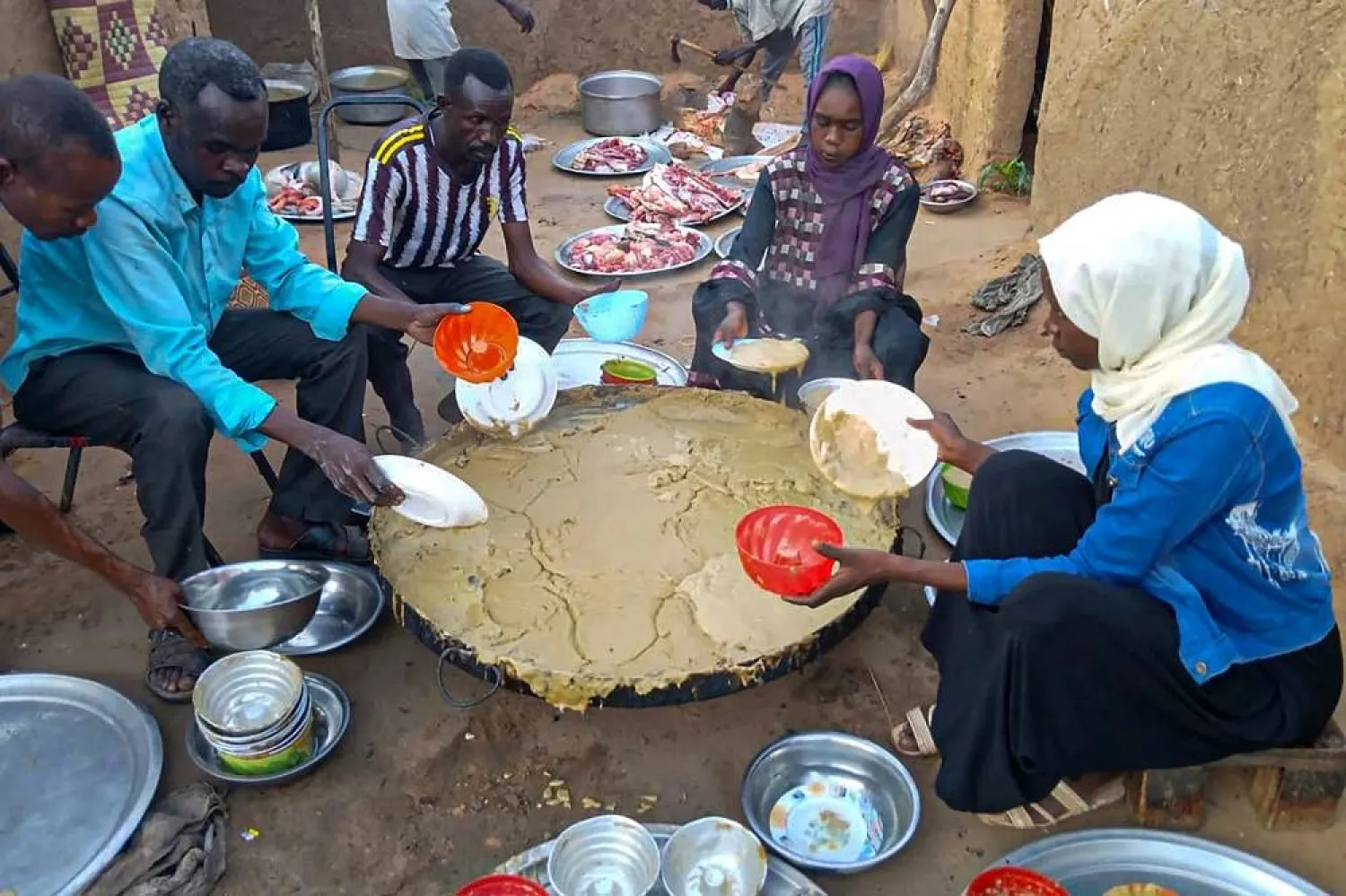In the cholera-stricken refugee camps of western Sudan, every second is infected by fear. Faster than a person can boil water over an open flame, the flies descend and everything is contaminated once more.
Cholera is ripping through the camps of Tawila in Darfur, where hundreds of thousands of people have been left with nothing but the water they can boil, to serve as both disinfectant and medicine.
"We mix lemon in the water when we have it and drink it as medicine," said Mona Ibrahim, who has been living for two months in a hastily-erected camp in Tawila.
"We have no other choice," she told AFP, seated on the bare ground.
Adam is one of nearly half a million people who sought shelter in and around Tawila, from the nearby besieged city of El-Fasher and the Zamzam displacement camp in April, following attacks by the paramilitary Rapid Support Forces (RSF), at war with Sudan's regular army since April 2023.
The first cholera cases in Tawila were detected in early June in the village of Tabit, about 25 kilometers south, said Sylvain Penicaud, a project coordinator for French charity Doctors Without Borders (MSF).
"After two weeks, we started identifying cases directly in Tawila, particularly in the town's displacement camps," he told AFP.
In the past month, more than 1,500 cases have been treated in Tawila alone, he said, while the UN's children agency says around 300 of the town's children have contracted the disease since April.
Across North Darfur state, more than 640,000 children under the age of five are at risk, according to UNICEF.
By July 30, there were 2,140 infections and at least 80 deaths across Darfur, UN figures show.
Cholera is a highly contagious bacterial infection that causes severe diarrhea and spreads through contaminated water and food.
Causing rapid dehydration, it can kill within hours if left untreated, yet it is preventable and usually easily treatable with oral rehydration solutions.
More severe cases require intravenous fluids and antibiotics.
Ibrahim Adam Mohamed Abdallah, UNICEF's executive director in Tawila, told AFP his team "advises people to wash their hands with soap, clean the blankets and tarps provided to them and how to use clean water".
But in the makeshift shelters of Tawila, patched together from thin branches, scraps of plastic and bundles of straw, even those meagre precautions are out of reach.
Insects cluster on every barely washed bowl, buzzing over the scraps of already meagre meals.
Haloum Ahmed, who has been suffering from severe diarrhea for three days, said "there are so many flies where we live".
Water is often fetched from nearby natural sources -- often contaminated -- or from one of the few remaining shallow, functional wells.
It "is extremely worrying," said MSF's Penicaud, but "those people have no (other) choice".
Sitting beside a heap of unwashed clothes on the dusty ground, Ibrahim said no one around "has any soap".
"We don't have toilets -- the children relieve themselves in the open," she added.
"We don't have food. We don't have pots. No blankets -- nothing at all," said Fatna Essa, another 50-year-old displaced woman in Tawila.
The UN has repeatedly warned of food insecurity in Tawila, where aid has trickled in, but nowhere near enough to feed the hundreds of thousands who go hungry.
Sudan's conflict, now in its third year, has killed tens of thousands and created the world's largest displacement and hunger crises, according to the United Nations.
In Tawila, health workers are trying to contain the cholera outbreak , but resources are stretched thin.
MSF has opened a 160-bed cholera treatment center in Tawila, with plans to expand to 200 beds.
A second unit has also been set up in Daba Nyra, one of the most severely affected camps. But both are already overwhelmed, said Penicaud.
Meanwhile, aid convoys remain largely paralyzed by the fighting and humanitarian access has nearly ground to a halt.
Armed groups, particularly the RSF, have blocked convoys from reaching those in need.
Meanwhile, the rainy season, which peaks this month, may bring floodwaters that further contaminate water supplies and worsen the crisis.
Any flooding could "heighten the threat of disease outbreaks", warned UN spokesman Stephane Dujarric.
The World Health Organization said last week that cholera "has swept across Sudan, with all states reporting outbreaks". It said nearly 100,000 cases had been reported across the country since July 2024.
UNICEF also reported over 2,408 deaths across 17 of Sudan's 18 states since August 2024.







